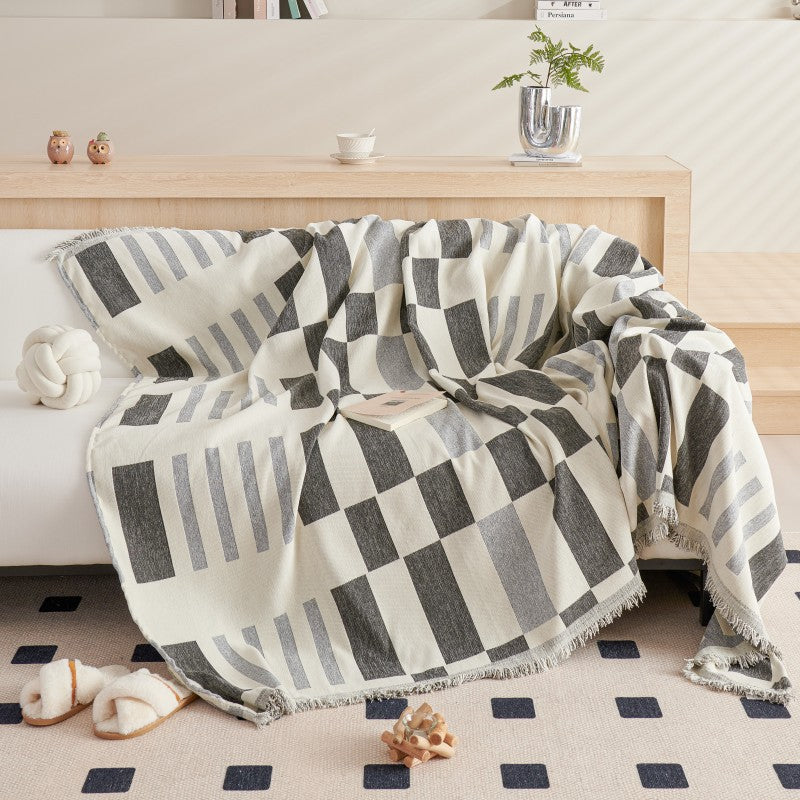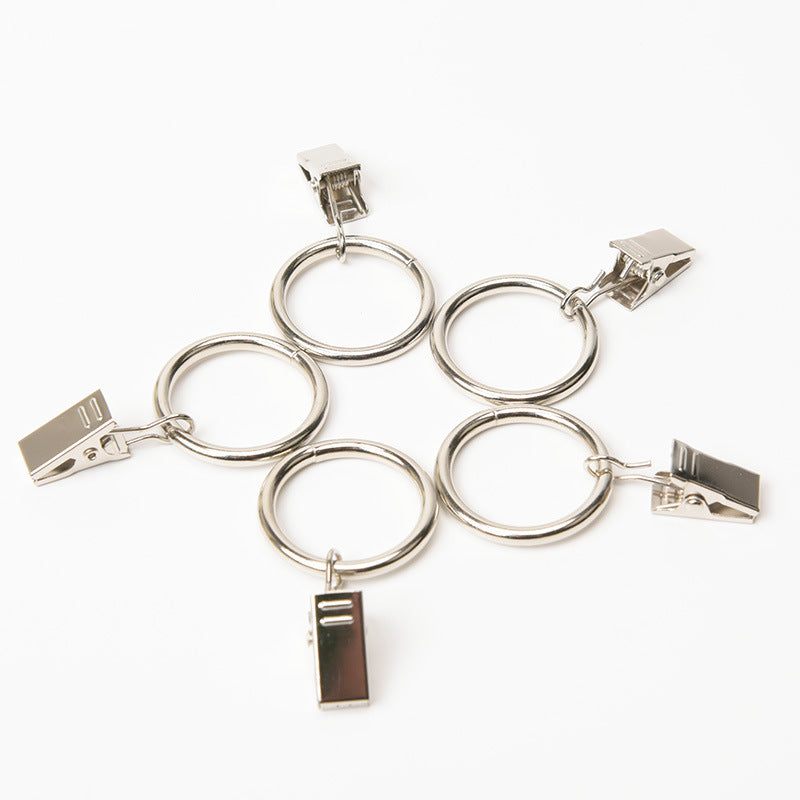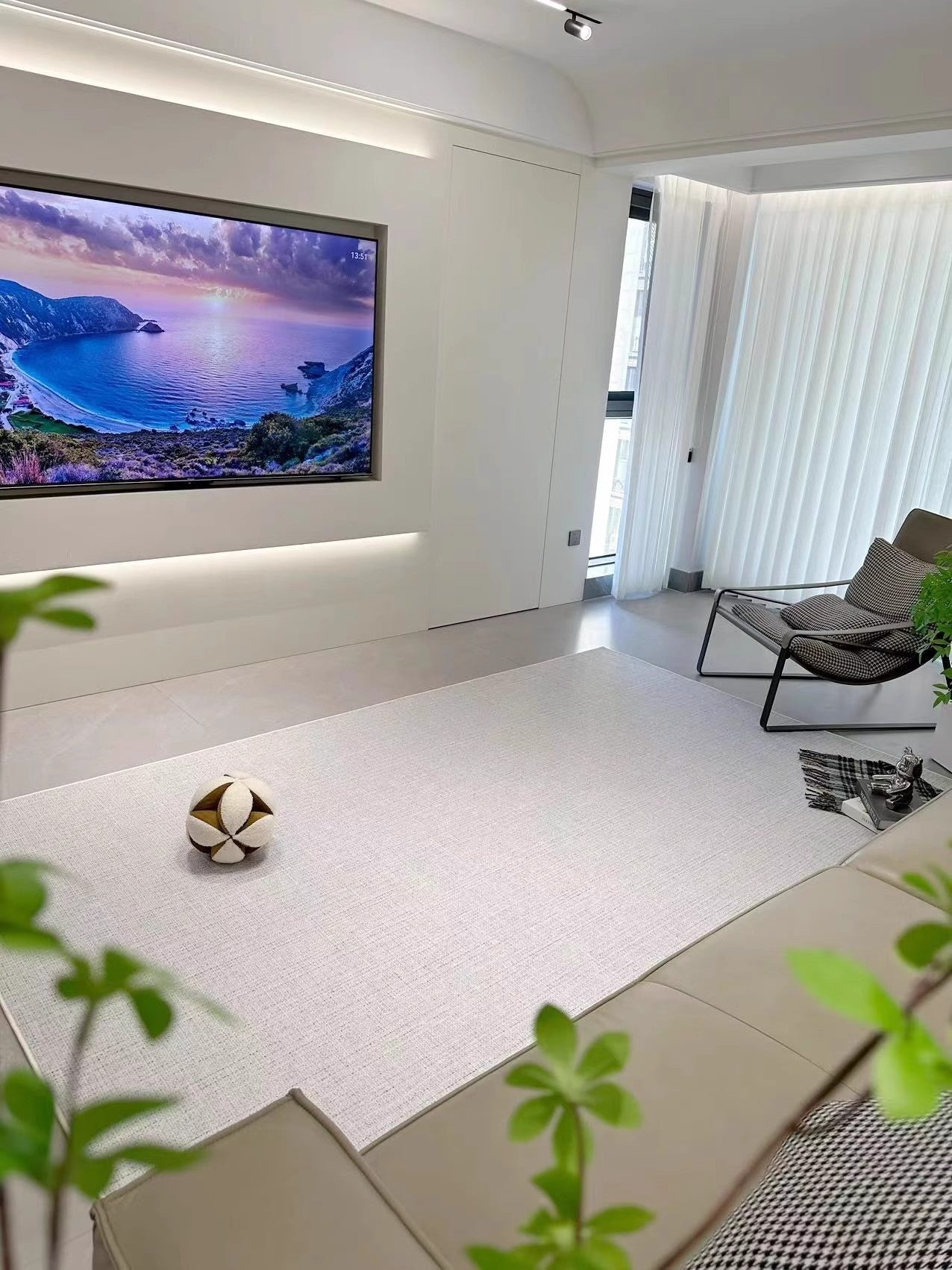Choosing Color-Blocking Curtains: The Ultimate Guide
Color-blocking curtains are a fun and creative way to add bold, artistic flair to any room. By combining blocks of color in your window treatments, you can make a statement, accent architectural details, and enliven your interior decor.
As the owner of Dolcewe, a home décor store specializing in Custom size curtains and drapes, I've helped many clients design showstopping color-blocked window treatments. This customizable trend allows you to add artistic flair that expresses your unique personality.
In this comprehensive guide, we'll explore everything you need to know about choosing and styling color-block curtains, from understanding color theory to executing DIY projects. Let's dive in and learn how to use this leading decor trend to customize your space!
Key Takeaways:
- Color-blocking curtains allows for endless creativity and customization for a unique look.
- Follow color theory fundamentals to create harmonious and intentional palettes.
- Consider the room's existing décor and lighting when selecting color schemes.
- Play with different color-blocking layouts like horizontal stripes, diagonal ombre and more. Choose fabrics that suit the style and enhance functionality.
- Proper installation is key to crisply defined color-blocking.
- Customize lengths, layers and accents for personalized style in any room.
- Dolcewe offers custom size color-blocking curtains, starting $26.99

Color-blocking curtains feature two or more solid blocks of color on the same panel. This eye-catching technique first emerged in the 1960s and became popular in fashion design. In recent years, color-blocking has made its way into home décor and interior design as well.
The color-blocked panels create visual interest, define spaces, and immediately draw the eye. You can use complementary shades, analogous tones, or bold contrasts to achieve your ideal aesthetic. Color-blocking allows for unlimited creativity and customization for a true one-of-a-kind look.
When selected with intention, the color combinations, placement, and orientation of the blocks can enhance your interior layout and architecture. Color-blocking curtains lend themselves well to large statement windows, glass doors, room dividers, and more.
Understanding Color Theory for Color-Blocking Curtains

A basic understanding of color theory is key when color-blocking your curtains. This ensures your blocks and schemes complement each other and fit the overall style of your space.
The color wheel is an essential guide, as it shows the primary, secondary, and tertiary colors and how they relate to each other. Primary colors are red, blue and yellow. Mixing two primary colors creates the secondary colors of orange, green and purple. Blending primary and secondary colors gives the tertiary colors.
Additionally, the color wheel displays complementary colors, which sit directly across from each other, like red and green. Analogous colors are located right next to each other, like blue and purple. Triadic colors form a triangle on the color wheel, like red, yellow and blue.
When selecting your color-blocking palette, consider the mood you want to create. Warm colors like red and orange are energizing. Cool colors like blue and green are calming. Bright vivid colors feel whimsical, while neutrals promote tranquility.
Understanding these fundamentals allows you to consciously curate color schemes that align with the vibe you want your curtains to exude.
Choosing Colors for Color-Blocking Curtains
When determining the color combinations for your curtains, consider the room’s existing design elements. Look at the color of your furniture, rug, artwork and accessories. Try to select curtain colors that integrate well into the overall décor.
You can choose to match your color-blocking curtains to the current palette for cohesion. Contrasting or complementing the other tones creates visual interest. Use lighter shades to keep the room feeling bright and airy. Go for darker, saturated hues if you want a more intimate ambiance.
It often helps to test out different color-blocking samples before fully committing. Seeing the combinations in the actual space allows you to judge what feels harmonious. You can easily customize samples yourself or order affordable swatches.
Think about the light in your room as well. North or east-facing windows receive consistent natural light. South or west exposures get brighter direct sunlight. Cool tones often suit brighter spaces, while warm palettes feel cozy in dim lighting.
Consider the mood you want to cultivate, too. Energizing yellows and reds are ideal for a morning breakfast nook, while tranquil blues work well in a bedroom. Explore colors that align with how you want the room to feel.
Types of Color-Blocking Patterns
When planning your color-blocking curtains, consider how you want to divide up the panel into your selected color blocks. Some options include:
Horizontal Color-Blocking
Divide the panel into two or three horizontal stripes of different colors. This works especially well for large or wide windows.
Vertical Color-Blocking
Break up the panel into vertical blocks of alternating colors from top to bottom. This technique suits narrow, floor-to-ceiling windows.
Diagonal Color-Blocking
Use diagonal lines to transition between color blocks for a more dynamic look. Angled color stripes help draw the eye up and can make windows appear larger.
Geometric Color-Blocking
Incorporate geometric shapes like circles, squares, rectangles or triangles in contrasting colors. This type of color-blocking has a structured, contemporary vibe.
Ombre Color-Blocking
Ombre patterns gradually blend and fade from one color to the next. Try lighter shades fading into darker tones. The watercolor effect is artistic and whimsical.
Experiment with placement to determine which type of color-blocking pattern works best for your space. Align and overlap the seams in symmetrical or asymmetrical ways to customize the look.
Fabric Considerations for Color-Blocking Curtains
The fabric you select affects the color-blocking curtains’ appearance, functionality and durability. Consider the following criteria when choosing materials:
Opaqueness
More opaque fabrics effectively block light and ensure privacy. Sheers softly filter light for a diffused effect.
Weight
Medium to heavyweight fabrics hold color-blocking lines crisply. Lightweight materials drape more fluidly.
Fibers
Natural fibers like cotton and linen provide breathability. Polyester offers vivid colors, while synthetics like acrylic resist fading.
Texture
Smooth, crisp fabrics feature color-blocking sharply. Textural materials display color variations in a more organic way.
Care
Determine if the fabric is machine washable or needs dry cleaning. Performance fabrics clean easily without losing their color integrity.
Selecting the right fabric grounds your artistic color-blocking in functionality. Coordinate options like blackout linings or thermal insulation for even more utility. Check our curtains fabrics guide for help.
Hanging and Mounting Color-Blocking Curtains
Installing your color-block curtains properly ensures they hang beautifully as designed. Follow these tips:
Choose suitable hardware: Select a curtain rod that spans the full width of your window for even hanging. Extend the rod at least 3-4 inches beyond the window's edges for optimal light blocking.
Measure precisely: Measure the exact width of your window to determine the proper curtain panel dimensions. This prevents gaps or bunching when hung. Measure the height as well and purchase curtains long enough to puddle attractively on the floor. Check our curtain size calculator for help.
Mount securely: Use the appropriate fasteners and anchors when mounting your curtain rod hardware to the wall or ceiling. This provides stability and prevents sagging over time.
Hang evenly: Use rings, grommets, back tabs or pleats to evenly distribute the fullness when hanging panels. This maintains the color-blocking lines in precise formation.
Overlap panels: When using multiple panels, ensure about 4 inches of overlapping coverage for seamless color-blocking. Mount panels as close together as possible on the rod.
Proper hanging techniques keep your curtains looking crisp, professional and picture-perfect. We offer custom sizing for all our color-blocking curtains to fit the exact dimensions of your windows.
Styling Color-Blocking Curtains in Different Rooms

One of the beauties of color-blocking curtains is their versatility across styles and spaces. Here are creative recommendations for incorporating color-blocked panels in various rooms:
Living Rooms
Make a bold statement in your living room with contrasting color-blocks in vibrant, complementary tones. Use this eye-catching element to define seating areas and direct focus to your architectural details or artwork displays.
Bedrooms
Establish a relaxing ambiance in the bedroom with soft, analogous color schemes in muted neutrals and pastels. Layer sheer panels behind opaque curtains to filter in the morning light. Coordinate soothing colors with plush bedding and upholstered headboards.
Dining Rooms
Incorporate sophisticated style into your dining space with color-blocked curtains in rich jewel tones, metallic sheens, or organic earth tones. Draw focus to chic trim details like a contrasting band along the hem or subtle third color.
Home Offices
Boost productivity in your home office with energizing color palettes featuring bright primary shades. Opt for crisp geometric color-blocks to evoke an organized feel. Coordinate with motivational accent décor.
Have fun testing out various color combinations and placements to create custom looks for each space. Adjust lengths, layer sheers, add tiebacks, and incorporate lining for even more variation.
DIY Color-Blocking Curtain Projects
For the hands-on decorator, consider making your own custom color-block curtains. Here are some easy steps to DIY the design:
Materials
Purchase your selected curtain and color-blocking fabrics. Coordinate lining material, eyelets/grommets, thread, scissors, measuring tape, and sewing essentials.
Color pattern design
Decide on your color-blocking layout. Sketch or model the placement of squares, stripes, ombre patterns or geometric shapes.
Cutting
Use a ruler and fabric marker to measure and mark the color pattern cuts on your material as designed. Cut fabric pieces according to your markings.
Sewing
Sew the color-block pieces together, aligning the edges precisely. Iron seams flat for crisp definition. Sew any top or bottom hem. Add lining if desired.
Gathering
Create a channel at the top to feed the curtain rod through. Attach grommets/eyelets at this stage.
Hanging
Mount your custom color-blocking curtains on the window hardware. Adjust and overlap panels for full coverage.
DIY allows complete creative freedom to color-block your curtains in any motif you can imagine. Add bold trims, bands, ties or accents for even more originality.
Conclusion
Color-blocking curtains provides an artistic, imaginative approach for injecting vibrant personality into your rooms. Following the fundamentals of color theory allows you to curate eye-catching yet harmonious palettes. Tailor your designs to complement each space’s aesthetic and atmosphere.
From energizing geometric shapes to soothing ombre fades, the possibilities are endless when color-blocking your curtains. Achieve the custom look and added functionality your windows need with this leading interior design trend. With a bit of planning and creative thinking, you can color-block your way to a showstopping window treatment that becomes the focal point of your décor.
At Dolcewe, we offer a wide selection of color-blocking curtains in various fabrics like linen, velvet and more. You can select readymade panels in our signature designs or customize the dimensions and color motifs to your exact specifications. The best part? We provide custom sizing curtains, starting at just $26.99! Shop Now!
























